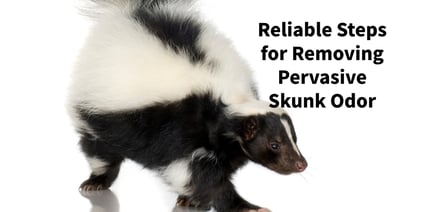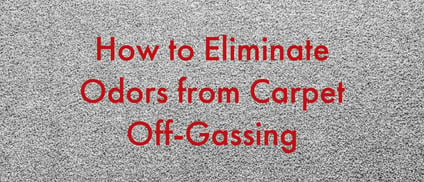Homemade cookies. Baking bread. Mom’s spaghetti sauce. We can all recall enjoyable fragrances from the kitchen. Just writing this is making me hungry. However, not every odor from the kitchen is appreciated by everyone.
All of us grow accustomed to the odors around us. Our olfactory system becomes desensitized and we hardly notice them.
However, step into a different home or apartment and immediately notice any odor. A home for sale or an apartment being made ready for a new renter may come with lingering odors of spicy or fragrant foods that don’t smell like home. If the previous occupants were in the home for a long time, odors may be in the ductwork or have penetrated walls, ceilings, and every porous surface.
Curry is the one cooking odor that generates questions to Interlink Supply customer service, but definitely not the only one. We are asked about odors from fish, onions, and more. The following advice can be helpful with all manner of cooking odors.
WHAT IS CURRY?
Curry leaves are an aromatic spice, but curry can refer to many international with a spicy sauce often served with rice or bread.
Spices used in curry dishes include not only curry leaves but onions, ginger, cinnamon, nutmeg, cloves, coriander, cumin, various chilies, and peppers.
The spices and other ingredients are cooked in oil. The result is not only an aroma in the air but volatilized oils that carry the fragrance and then firmly adhere them to whatever surface they contact. Heat also causes surfaces near the cooking to open up and accept odors that are then difficult to remove at normal temperatures.
BE REALISTIC
Your customer may ask you to clean the carpets with the expectation this will remove the odors. This is not going to happen. Or they may want you to get out your magic deodorize and spritz the room. Don’t expect a quick spray of any product to remove every trace of odor.
Materials that have absorbed odors for many months or even years will not give them up easily. In many cases, painting or sealing will be required. In extreme situations, where items have been exposed to curry odors over many months or years, some materials will require replacement.
THE PROCEDURE
Every odor removal starts with removing the source. This means a thorough cleaning of every surface that was exposed. A landlord, real estate agent, or other clients may ask you to clean the carpet. That is just the start. Numerous surfaces can absorb and later re-emit odors. The walls need to be washed. Cabinets and drawers need cleaning inside and out. Get behind the stove and refrigerator. Clean exhaust fans and light fixtures. Propose floor-to-ceiling cleaning if the client wants the odor completely removed. Use a cleaner appropriate for each surface.
For surfaces made of unfinished wood or wood substitutes, start with dry cleaning sponges and maybe a vacuum. For severe situations, I found that sanding them down to remove the top layer of wood and open up pores helped to remove odors. Textured or acoustical ceilings can be cleaned with dry cleaning Sponges.
Use OmniPro Vission or Fire Power or other alkaline wall washing solution for walls and hard surfaces. Complete your cleaning solution with a deodorizer. OmniPro 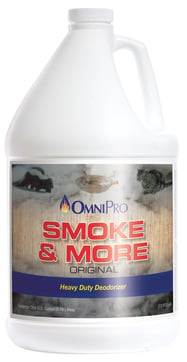 Smoke & More can be added to any water-based cleaning solution to help with cooking odors. Hydrocide uses the newest technology to absorb and counteract cooking and other organic odors. I have found products designed to work on tobacco smoke also work well on cooking odors.
Smoke & More can be added to any water-based cleaning solution to help with cooking odors. Hydrocide uses the newest technology to absorb and counteract cooking and other organic odors. I have found products designed to work on tobacco smoke also work well on cooking odors.
Products for wood floors can also be used to clean finished wood cabinets. Give special attention to cabinets close to the stove. Removing soils and built-up cooking oils goes a long way to removing odors.
All surfaces of the range exhaust hood and any filter there must be cleaned. Replace disposable filters. Don’t forget to change the HVAC filters. The ductwork may need to be cleaned, too.
Now it is time to recreate the conditions that caused the odor. Thermal fogging and ozone are common ways to do so and they work well. However, each introduces health and safety concerns and must be used with special precautions in unoccupied areas.
I prefer Vaportek Smoke Odor Solution (SOS). Vaportek does require more time to get the last traces of odor out of materials. But, unlike thermal fogging, you don’t need to wait until the home is unoccupied. Vaportek can be started as soon as you walk into the home. This gives the customer an immediate sense that you are making progress at removing the odor. Vaportek can be used even if the area is occupied by people, pets, or plants. It is 100% safe and not harmful when used as directed.
Vaportek’s “dry vapor” system consists of volatilized oils that recreate the way the malodor was deposited. The dry vapor can penetrate, wallboard, wood, masonry, and other structural materials. When the essential oils contact odor molecules, the malodors are neutralized.
An important step in dealing with almost any household odor situation is ventilation. Open windows, and use ceiling fans or air movers to create air movement to bring in fresh air and exhaust stale air along with odors.
Featured Products
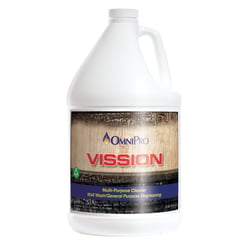
OmniPro Degreaser Vission Soot Remover, 1 Gallon
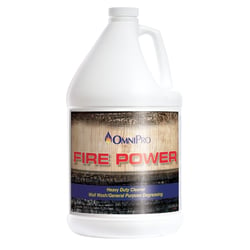
OmniPro Degreaser Fire Power Soot Remover, 1 Gallon
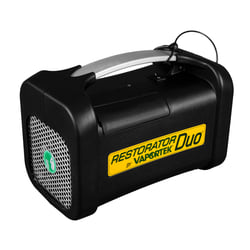 Vaportek, Portable Dry Vapor Odor Removal, Restorator DUO
Vaportek, Portable Dry Vapor Odor Removal, Restorator DUO
Enjoyed reading this post? Read the following articles:

